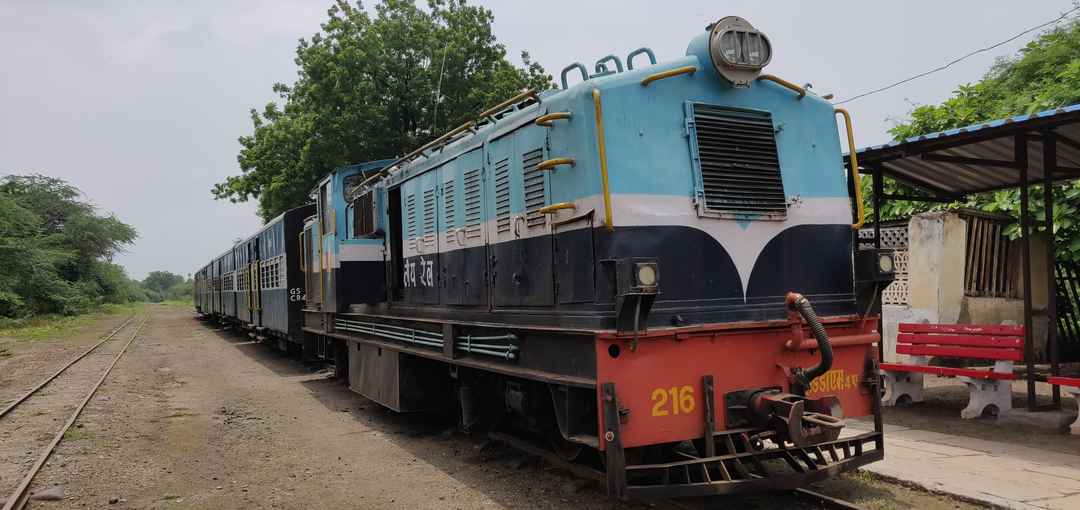The heartbeat of Maharashtra’s transportation system might soon experience a renaissance, as the state’s interim budget proposes a groundbreaking 50% financial infusion for the revival of the Shakuntala Express rail route. Let’s delve into the narrative of this historical railway, which last echoed its whistle eight years ago, navigating the tracks under the ownership of the Central Provinces Railway Corporation (CPRC), established in 1910.
Shakuntala Exp: A Journey Through Time
The Rise and Fall
Shakuntala Express, once a lifeline coursing through the cotton belt of Maharashtra, ceased its rhythmic journey eight years back. The cessation was attributed to both economic inviability and technical complications, according to insider sources. The intricate network once started from Yavatmal, extending its reach to Achalpur in Amravati and Murtijapur in Akola.
Changing Landscapes
During the colonial era, and beyond, this railway earned the moniker of the region’s lifeline. Yavatmal, devoid of rail connectivity even today, relied on Shakuntala Express for its transit connection. The track, formerly narrow gauge, garnered historical significance, prompting demands for its conversion to broad gauge.
A Glimpse into the Future: Shakuntala Exp After 8 Years
Budgetary Boost
The current budgetary provisions exhibit a pivotal shift in perspective, with a generous 50% financial participation earmarked for the revitalization of Shakuntala Express. This not only reflects the government’s commitment to historical preservation but also anticipates the economic resurgence associated with rejuvenating this once-vital railway.
Wardha-Nanded Track: Connecting the Dots
The proposed Wardha-Nanded track emerges as a strategic move to integrate Yavatmal into the main line, breaking its isolation from the rail network. Simultaneously, Murtijapur retains its significance on the Mumbai-Nagpur line, underlining the comprehensive connectivity envisioned in the modernization plans.
Shakuntala Exp: What to Expect?
Technical Transformations
As discussions surrounding the revival gain momentum, there are whispers of technological upgrades. The potential conversion from narrow to broad gauge promises improved efficiency and aligns with contemporary rail standards. This metamorphosis aims to ensure Shakuntala Express seamlessly integrates into the modern rail network.
Community Impact
Beyond the logistical implications, the resurrection of Shakuntala Express holds cultural and social significance. It reconnects communities, revitalizes local economies, and preserves the historical legacy embedded in the railway’s tracks.
Shakuntala Exp May Run After 8 Years: FAQs
1. Why Did Shakuntala Express Stop Running 8 Years Ago?
The cessation was multifaceted, driven by economic challenges and technical complexities that rendered the operation unviable.
2. What Initiatives Led to Its Revival in the Budget?
The state’s interim budget allocates a substantial 50% financial participation, signaling a concerted effort to resurrect the iconic Shakuntala Express.
3. How Will the Proposed Wardha-Nanded Track Impact Yavatmal’s Connectivity?
The track is envisioned to bring Yavatmal onto the main line, addressing its longstanding absence from the rail network and fostering broader connectivity.
4. What Changes Are Expected in Shakuntala Exp’s Infrastructure?
The transition from narrow to broad gauge is on the horizon, promising technical advancements to enhance the railway’s efficiency and relevance.
5. What Societal Benefits Are Anticipated With Shakuntala Express’s Revival?
Beyond logistical enhancements, the resurrection is poised to rejuvenate communities, stimulate local economies, and preserve the rich historical fabric woven into the railway’s narrative.
6. When Can Commuters Expect Shakuntala Exp to Be Operational Again?
While timelines remain speculative, the budgetary allocation suggests a commitment to expeditious revival, hinting at a potential return in the near future.
A Journey Resumed
the envisaged revival of Shakuntala Express stands as a testament to the intertwining of history and progress. The proposed financial infusion, technical advancements, and strategic track expansions collectively pave the way for a resounding comeback of this cherished railway, marking a significant chapter in Maharashtra’s transportation legacy. As the wheels of time turn, Shakuntala Exp may once again resonate through the heartlands, reconnecting communities and rekindling the spirit of a bygone era.
